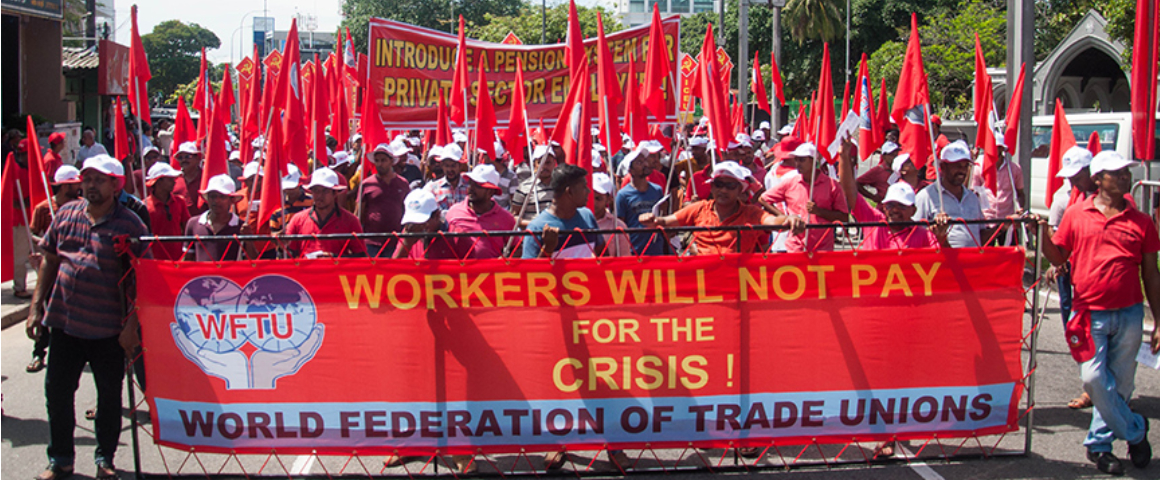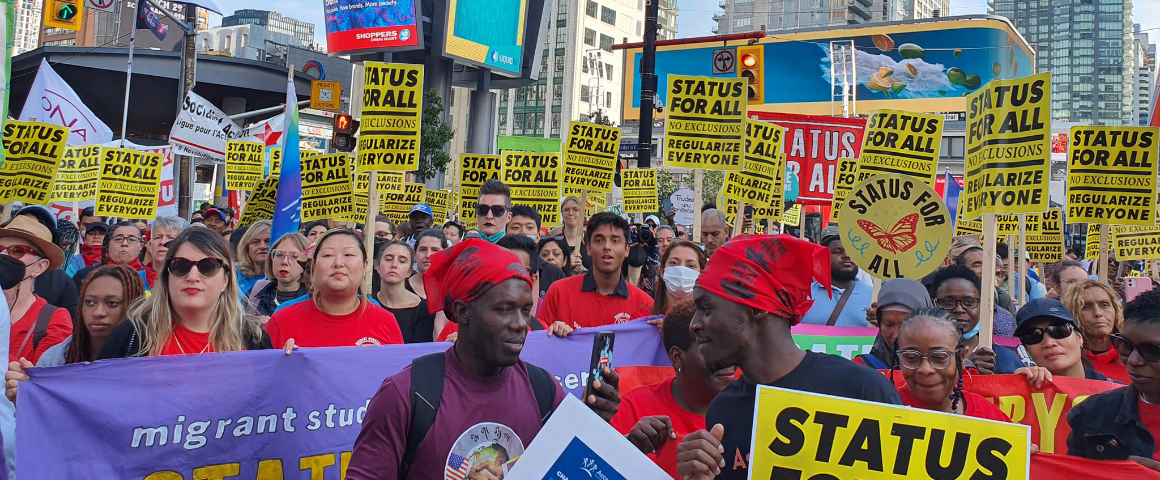By Sam Hammond
“Reforms for the improvement of people’s situation, which here and now and at every instant are always sensible because politics is conducted in the interest of people now living, cannot be the aim of a communist party, rather only an aspect of its continuing struggle. For it is not a question of managing better in this capitalist society; and it would be an illusion to believe that internal capitalist contradictions can be removed by reforms, since they are structural contradictions of the system of the production relations. It is much more a question – on the route via reforms – of changing the social system.”
The above quote by Hans Heinz Holz is concisely and articulately states the position of revolution and reform from the revolution side. It quite correctly identifies reforms as sensible while explaining why they cannot be the strategic aim of a communist party.
If reforms are necessary and sensible but cannot be the aim of the party, then what exactly are they in regard to the aim of destroying the exploiting class and initiating a classless society? In short, they are “quantities” in the struggle to bring about a qualitative change. As such, they must not be viewed only as building blocks of developing contradiction, but as part of the dynamic that can, depending on the historical and social environment, plod along or explode.
The difference between communists and social democrats is not defined by whether or not they struggle for reforms – indeed, most reforms favouring the working-class quality of life were initiated by communists – but whether or not they view them as a “quantity” on the road to social transformation or an end in themselves, a bandage to save capitalism and help it maintain hegemony as a kinder capitalism with a human face.
To struggle for reforms is not necessarily reformism. To see them as a treadmill item in a permanent capitalism is. That is the essential difference between reformism and class struggle.
Communists see reforms as quantities in the class struggle to alleviate human suffering, interfere in the rate of exploitation, develop class consciousness, unite the working class and develop the most conscious in the strategy and tactics of resistance and revolution. Social democrats see the campaign for reforms as a rather vapid cap-in-hand series of campaigns, legal briefs and parliamentary trade-offs in the process of shaping the imaginary pluralistic society into an enlightened utopia of kind and caring capital. Something closely akin to training a wolverine into a loving house pet, and just as achievable.
The struggle for reforms must be won by mass action that raises class consciousness to the level of ideology and program, involving the most advanced sections of the population and developing the demand for more reforms. This is antithetical to the vision of negotiated reforms on behalf of the people as a bartering tool for class peace, a social contract of collaboration on the part of an aristocracy of the working class.
If reforms are not the aim but rather an instrument or a “quantity” in the class struggle, then the struggle for the kind of reforms to be sought, and the kind of mobilization of forces to achieve them, must radically differ from the tepid campaigns of social democracy for a kinder capitalism, decent work and more crumbs from the table.
The demand for a Charter of Labour Rights – long championed by the Communist Party – which would require the mobilization of significant forces and secure the immunity of the labour unions from legislative attack, is ignored by the social democratic labour leadership because they are very well aware that massive mobilization would require changes in leadership and program that would expose collaboration and complicity in the global neoliberal agenda.
The concept of reforms carried through on a provider-and-client basis, as found in the models of “business trade unionism,” or the sectarian proprietorship expressed by social democracy in the concept “we will look after your needs, just vote for us,” was at the heart of the major split orchestrated by the “pink paper unions” that destroyed the united fightback against the Mike Harris Tories in Ontario years ago.
When the concept of sectarian paternalism and control won out, it set the stage for the long sleep of the Ontario Federation of Labour (in the same bed as the Canadian Labour Congress), helped isolate the CAW union and allowed Buzz Hargrove to move it to the right. The main labour leadership was quite happy to farm out political campaigning to the NDP’s sectarian parliamentarianism. The aim was to eliminate democratic member-driven mass struggle and isolate or control labour’s social justice partners.
Most workers in Canada do not come face-to-face with capitalists in their workplace, as workers did in the earlier stages of capitalism, when capitalists self-managed their enterprises and the workforce. However, they do come face-to-face with the professional-representative strata who manage enterprises and financial institutions, services and the state itself on behalf of the ruling class. Along with this are the increasingly complex and diversified forms of social production, the escalating alienation of workers from the products of their labour, and the complete subservience of the mainstream to the corporate agenda.
It is apparent how the buffer zone of deception can hide the class brutality of exploitation and create a breeding ground of reformism not oriented against the capitalist class directly but against the representatives of that class.
Wealth – as viewed directly in exorbitant salaries, bonuses and stock options for the managers of capital – can obscure the fundamental relationship between exploiters and exploited and promote the concept of fair distribution as a solution. For the working class to seize and hold as much as possible of the wealth they produce is a necessary battle, but only as a quantity in the struggle for emancipation and not as a payment for class peace.
Entire ownership of the means of production and 100 percent social expropriation is the only alternative.
The self-awareness and self-identification of working people as an exploited class must emerge from a worldview that has components about the past, present and future. Development of social consciousness – first of all as an awareness of, or bewilderment with injustice, grievances and defencelessness – can and does arise in individual people, but it is impotent rage and only takes on a socio-political character when it is nurtured and developed in social groupings.
There is also an accelerating factor in group action that can provide the equivalent of years of experience from moments of activity. One strike, no matter how small or isolated, brings the reality of class power, the need for organization and the need for class unity to the forefront. The strike of necessity precedes the realization that the workers must own and control their own bodies and the product of their labour, and that the withdrawal of their labour power is the economic lever of reforms and of reprisal, and is strengthened by mass unity.
Social consciousness is developed in social formations, and among the working class the trade unions are by far the most advanced and organized social formations. This situates them in the class struggle and defines them as an essential ingredient, not just one grouping among others. Trade union struggles historically are the first stage in the developing of social consciousness – of class consciousness.
The initial stages of struggle are naturally economic, part of workers’ struggle for subsistence, and tend to shape the organization and structures of labour unions and their goals.
Labour unions exist in the terrain of capitalist society, and their social concepts and demands reflect the reality of their environment. They are reformist and economist initially because they deal with the immediate needs of living people. As Holz writes, “The development of total alternative conceptions for society is not their [labour unions] task. Socialist concepts certainly arise and continue within trade unions, but they are not the content of trade union struggles nor of trade union conceptions of organization.”
The revolutionary ideology of Marxism-Leninism did not arise from trade union struggles, but nevertheless the fertile ground of awakening class consciousness and the historical phenomenon of permanent workers’ institutions within the exploiting state creates a natural and essential merging of theory and practice. This phenomenon is at the root of much recent class history – including the need for the ruling class to inject into the trade unions the self-destructive ideology of counter-revolutionary anti-communist crusading in the form of McCarthyism and the Cold War against the Soviet Union. Social democracy was the willing accomplice in these campaigns in Canada.
The isolation, defeat and even physical expulsion from the ranks of the labour unions of members of the Communist Party was and is a project of the capitalist class and will continue as long as there is a class struggle. Conversely, their offensives, no matter how damaging, have never been complete because there were and will always be advanced members of the working class, including left social democrats, who refuse to abandon communist workers precisely because communists have been the advance guard in the struggle for reforms that have shaped their lives.
There is no blanket or pot lid in this world opaque enough to hide this history completely.
No matter how the tides rise and fall, communists never give up on their presence amongst the most organized sections of the working class and never deny these workers the weaponry of revolutionary ideology that they need, which will propel the struggle for reforms into the struggle for socialism.
Support socialist media!
If you found this article useful, please consider donating to People’s Voice or purchasing a subscription so that you get every issue of Canada’s leading socialist publication delivered to your door or inbox!
For over 100 years, we have been 100% reader-supported, with no corporate or government funding.




